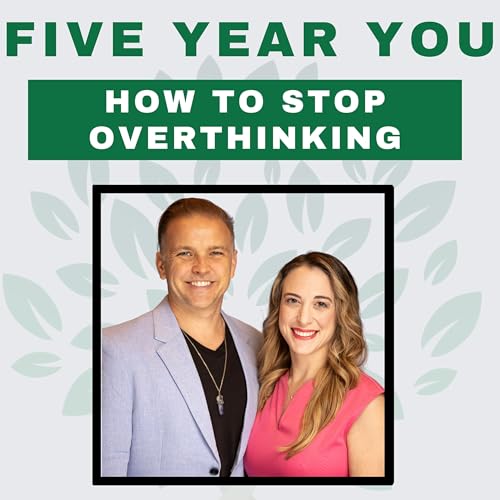
How to Stop Overthinking
Failed to add items
Sorry, we are unable to add the item because your shopping cart is already at capacity.
Add to basket failed.
Please try again later
Add to Wish List failed.
Please try again later
Remove from Wish List failed.
Please try again later
Follow podcast failed
Unfollow podcast failed
-
Narrated by:
-
By:
About this listen
Overthinking feels productive—but it’s really a mental treadmill. Andrew and Cat share simple, science-backed ways to break rumination loops, calm anxiety, and take clear next steps.
Big ideas- Overthinking ≠ problem-solving. It’s a certainty-seeking loop fueled by anxiety.
- Awareness is step one. “I’m trying to change what can’t be changed” stops past-focused spirals.
- Name it to tame it. Label the pattern (“I’m catastrophizing” / “Amy* is yapping again”) to reduce its grip.
- *Amy = your “amygdala alarm”—a playful mental cue.
- Interrupt the loop. Pattern-breakers (breath, movement, grounding) shift brain states.
- Get it out of your head. Journal, voice-notes, therapist, trusted friend—externalize the swirl.
- You already know more than you think. Get still; your body’s “yes/no” shows up fast.
- Action ends rumination. Any small next step beats spinning in maybe-land.
The Anti-Overthinking Playbook
- Spot it: “I’m looping.” (Awareness)
- Label it: “This is catastrophizing / future-tripping / should-storming.” (Name to tame)
- Pattern break (pick one):
- Box breathing 4–4–4–4 (1–2 min)
- 5–4–3–2–1 grounding (see/hear/feel)
- 10–15 minute walk (movement beats rumination)
- Hand on heart, slow breaths (drop from head → body)
- Externalize: 60-second brain dump (paper or voice note). If it’s still noisy, share with a therapist or trusted person.
- Choose one: Flip a coin or ask: “What would Future Me thank me for?” Notice your gut reaction → decide.
- Micro-action: One concrete step within 5–10 minutes (email, calendar block, checklist start).
- If it returns: Repeat. You’re building a new habit, not chasing perfection.
Quick scripts & mental cues
- Sleep cue: Silently repeat, “I’m not thinking” for ~60–90 seconds; return to breath when you drift.
- Yappy-dog reframe: “Thanks, Amy. Into the crate you go—I’ll revisit this at 4pm.” (Schedule the worry window.)
- Self-compassion: “I’m worrying because I care. I can choose peace by taking one small action.”
Tools Cat & Andrew use
- “Worry window” (10–15 min/day) to contain rumination
- Movement first: short walk, light chores, or stretching whenever loops start
- Coin-toss clarity to surface true preference
- Heart-breath check-in before decisions
Reframes to keep
- No wrong choices. Every decision is a result or a lesson. Both move you forward.
- Indecision is a decision. You’re choosing anxiety over momentum—pick a tiny step instead.
Glimmers
- Cat: A three-day weekend to reset and prep for Andrew’s visit.
- Andrew: Packing to fly out—looking forward to time together.
Resources mentioned (friendly starting points)
- Nonviolent Communication — Marshall B. Rosenberg (for clear needs/requests)
- Grounding & breath practices (box breathing, 5-4-3-2-1)
Stay connected
Questions, coaching, or topic requests: hello@fiveyearyou.com
More episodes & freebies: fiveyearyou.com
IG: @fiveyearyou
Affiliate note: As Amazon...
No reviews yet
In the spirit of reconciliation, Audible acknowledges the Traditional Custodians of country throughout Australia and their connections to land, sea and community. We pay our respect to their elders past and present and extend that respect to all Aboriginal and Torres Strait Islander peoples today.



